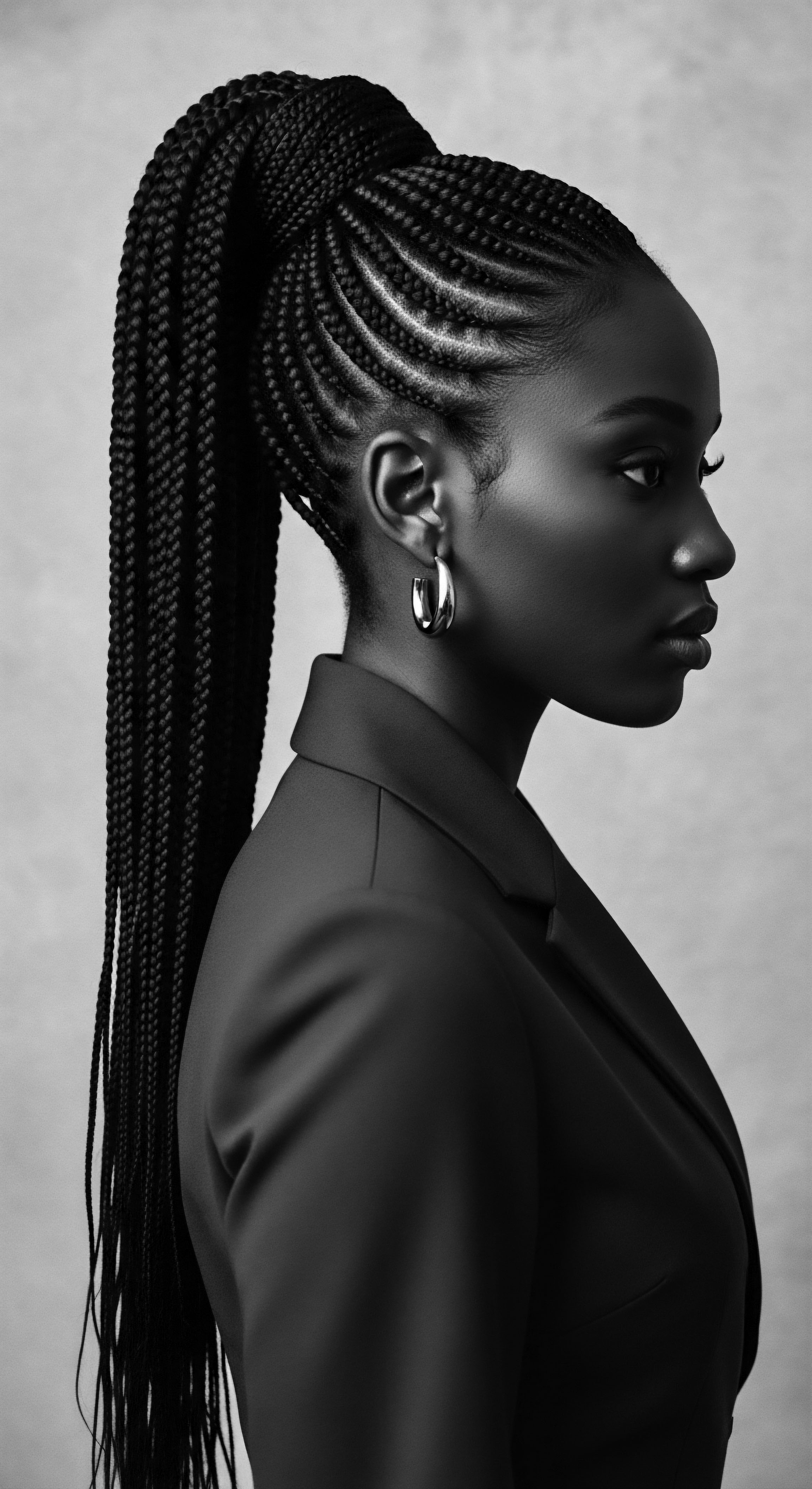
Roots
To truly understand the journey of textured hair, we must first look to its very beginnings, to the ancestral echoes reverberating within each curl and coil. This is not merely an anatomical discussion; it is an exploration of the fundamental essence of a strand, tracing its lineage through millennia of human existence. The question of whether ancient wisdom truly meets contemporary hair science for textured hair finds its initial answer here, in the biological blueprint that has carried stories across generations.
The human hair shaft, at its core, is a complex protein filament, yet for textured hair, this structure bears a unique and profound signature. Unlike straight or wavy strands, the follicular aperture from which textured hair emerges is typically elliptical, not round. This distinct shape dictates the natural helical twist of the hair as it grows, giving rise to its characteristic curl patterns, from broad waves to tight coils and intricate z-patterns. The cuticle layers, which normally lay flat in straight hair, are often less tightly packed in textured strands, presenting a fascinating interplay of microscopic scales.
This structural variance, a gift of our diverse human heritage, explains why textured hair behaves differently in response to moisture, tension, and environmental influences. It tends to be more prone to dryness due to the open cuticles and the challenges of natural oils traveling down the spiral path of the strand.
Traditional understanding, long before the advent of microscopes or molecular biology, recognized these distinct qualities through observation and intuition. Ancestral communities, living in varied climates across continents, developed care practices that intrinsically responded to these inherent characteristics. The practices were not just about aesthetics; they were about preserving the integrity of the strand, nourishing its propensity for dryness, and protecting its delicate architecture from the elements.
The intrinsic helical form of textured hair, a biological testament to heritage, shaped ancestral care long before scientific classification.
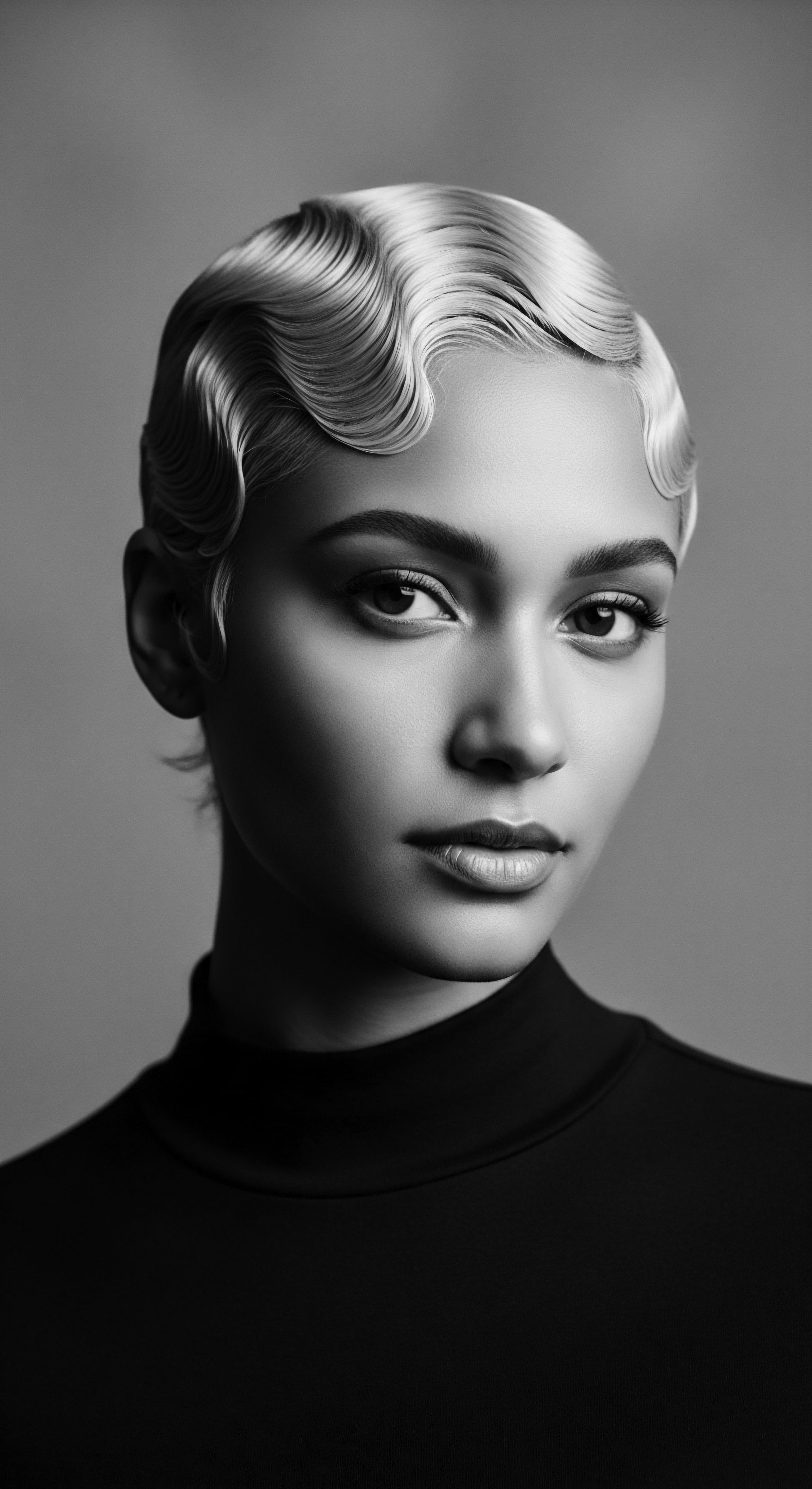
Ancestral Anatomy and the Science of Structure
Consider the ancient African communities, whose deep connection to the natural world informed their daily lives. Their understanding of hair, while not articulated in terms of keratin bonds or disulfide linkages, was highly practical and profoundly effective. They knew the hair could be brittle, that it needed rich, emollient plant oils, and that styles should protect rather than strain the delicate fibers. This intuitive knowledge aligns remarkably with what modern science now confirms ❉ textured hair, with its unique curvature and cuticular arrangement, requires specific approaches to maintain its strength and hydration.
The very nomenclature we use today to classify textured hair types, while offering a framework for contemporary science, sometimes struggles to encapsulate the full breadth of ancestral understanding. Systems like those categorizing hair from Type 3a to 4c provide a useful shorthand for curl density and pattern, yet they barely scratch the surface of hair’s deeper cultural meanings. These classifications, a relatively recent development in the grand timeline of hair care, stand beside an older, unwritten codex that recognized hair not just by its curl, but by its symbolic weight, its community story, and its connection to the earth’s bounty.
- Melanin Distribution ❉ Modern research shows the unique distribution of melanin granules within textured hair strands, contributing to their strength and often their rich, deep hues. Ancestral cosmetic practices frequently enhanced these natural tones with plant-based dyes.
- Tensile Strength and Elasticity ❉ Scientific studies indicate that while textured hair might appear robust, its points of curvature can be areas of vulnerability, prone to breakage under stress. Ancient styles and gentle handling aimed to mitigate this inherent fragility.
- Follicular Shape ❉ The elliptical follicle produces the characteristic spiral growth. This understanding, gleaned through contemporary microscopy, validates why traditional methods focused on root care and scalp health to support healthy growth from the source.

How Did Early Societies Perceive Hair Growth Cycles?
The cycles of hair growth—anagen, catagen, telogen—are universal, a biological rhythm that has governed hair’s lifespan since the dawn of humanity. Ancestral communities, acutely attuned to natural cycles, observed these phases through the shedding of strands and the continuous emergence of new growth. Their rituals surrounding milestones like births, rites of passage, and mourning often incorporated hair practices that honored these cycles of renewal and loss. For instance, postpartum hair care rituals in many African societies aimed to support the mother’s body through the telogen effluvium often experienced after childbirth, using nutrient-rich ingredients to stimulate healthy anagen regrowth.
Environmental and nutritional factors, deeply intertwined with ancestral lifeways, also played a significant role. Diets rich in traditional, nutrient-dense foods supported robust hair health from within. Access to clean water, herbs, and natural oils—elements often abundant in traditional homelands—formed the cornerstone of hair care.
The modern scientific understanding of nutrition’s impact on the follicular bulb and the need for micronutrients such as iron, zinc, and biotin directly correlates with these ancestral practices of consuming a varied, whole-food diet. The connection between healthy ecosystems and healthy hair was an embodied knowledge, not just a scientific theory.
| Aspect of Hair Hair Texture/Curl Pattern |
| Ancestral Understanding Recognized distinct hair behaviors, often attributed to lineage or spiritual connection. Care focused on moisture retention and protection. |
| Contemporary Scientific Insight Linked to elliptical follicle shape and uneven keratin distribution, causing unique curl patterns and increased susceptibility to dryness. |
| Aspect of Hair Hair Strength/Fragility |
| Ancestral Understanding Observed breakage at specific points, leading to protective styling and gentle handling. |
| Contemporary Scientific Insight Identified points of stress along the hair shaft's curves and less compactly arranged cuticle layers contribute to breakage. |
| Aspect of Hair Hair Growth Cycles |
| Ancestral Understanding Acknowledged natural shedding and regrowth, incorporated into rites of passage and celebratory rituals. |
| Contemporary Scientific Insight Defined by distinct anagen (growth), catagen (transition), and telogen (resting) phases, influenced by genetics and systemic health. |
| Aspect of Hair The enduring wisdom of heritage, often expressed through observation and ritual, finds validation and deeper explanation in the granular details of modern hair science. |
Even in the face of immense adversity, the care of textured hair held profound meaning. During the trans-Atlantic slave trade and its aftermath, the forced shaving of hair was a deliberate act of dehumanization, a stripping away of identity and connection to homeland. Yet, resilience prevailed. The Tignon Laws of 1786 in colonial New Orleans, for example, mandated that free women of color cover their hair with a headwrap, a direct attempt to suppress their beauty and social status.
These women, however, subverted the law, transforming the humble kerchiefs into elaborate, artful headpieces, a powerful act of defiance and cultural affirmation. This historical example shows how the understanding of hair as a marker of identity, and the ancient wisdom of adornment, became a tool of resistance. The headwrap, a symbol born of constraint, became a vibrant expression of pride and ingenuity, demonstrating that the intrinsic connection between hair, identity, and resilience is an ancestral truth, a heritage that endures. (Yaba Blay, 2021)

Ritual
The journey of textured hair care extends beyond its foundational biology; it blossoms into the realm of ritual—the conscious, often communal, acts of styling that have shaped and preserved cultural identity for generations. The meeting of ancient wisdom and contemporary hair science is perhaps most visibly demonstrated in the art of textured hair styling, where techniques passed down through time align with modern understanding of hair health and manipulation.
Ancestral hands crafted intricate styles not just for beauty, but for practicality and symbolism. Braiding, twisting, and knotting techniques, centuries old, served as vital protective measures, safeguarding strands from environmental damage, reducing breakage, and promoting length retention. These practices, honed over countless generations across diverse African communities and throughout the diaspora, represent a profound, applied science of hair preservation. The geometric precision of cornrows, the structural integrity of twists, and the protective embrace of Bantu knots all speak to an intuitive understanding of hair mechanics—how to distribute tension, how to seal in moisture, and how to minimize daily manipulation.
Styling textured hair is a living archive, where each braid and twist carries the echoes of ancestral technique and communal care.

Protective Styles ❉ An Ancestral Legacy
The concept of protective styling, so vital in contemporary textured hair care, finds its roots in deep historical practices. Before the era of commercial products and widespread heat styling, communities relied on natural methods to maintain hair health. These styles, often adorned with shells, beads, or cowrie, were also visual representations of social status, marital status, age, or tribal affiliation. The artistry involved was a highly skilled craft, passed from elder to youth, often during communal grooming sessions that reinforced family bonds and cultural continuity.
Consider the historical significance of styles like cornrows , which are depicted in ancient Egyptian carvings and have been found on the remains of Meroitic civilization. Their enduring presence across continents, from the intricate patterns of West Africa to their re-emergence in contemporary urban landscapes, speaks to their effectiveness as a protective measure and their profound cultural meaning. Modern science validates the benefit of these styles ❉ by minimizing external manipulation and exposure, protective styles reduce mechanical stress on the hair shaft, lessen moisture loss, and provide a stable environment for hair growth. This confluence of historical utility and scientific explanation paints a richer picture of their enduring value.
- Twisting ❉ A technique for coiling two strands of hair around each other, reducing tangles and preserving moisture.
- Braiding ❉ Weaving three or more strands together to create a cohesive, durable structure that shields the hair from environmental stressors.
- Locing ❉ A natural maturation process of textured hair, forming rope-like segments. Historically, locs have served spiritual, cultural, and aesthetic purposes, representing wisdom and connection to ancestry.
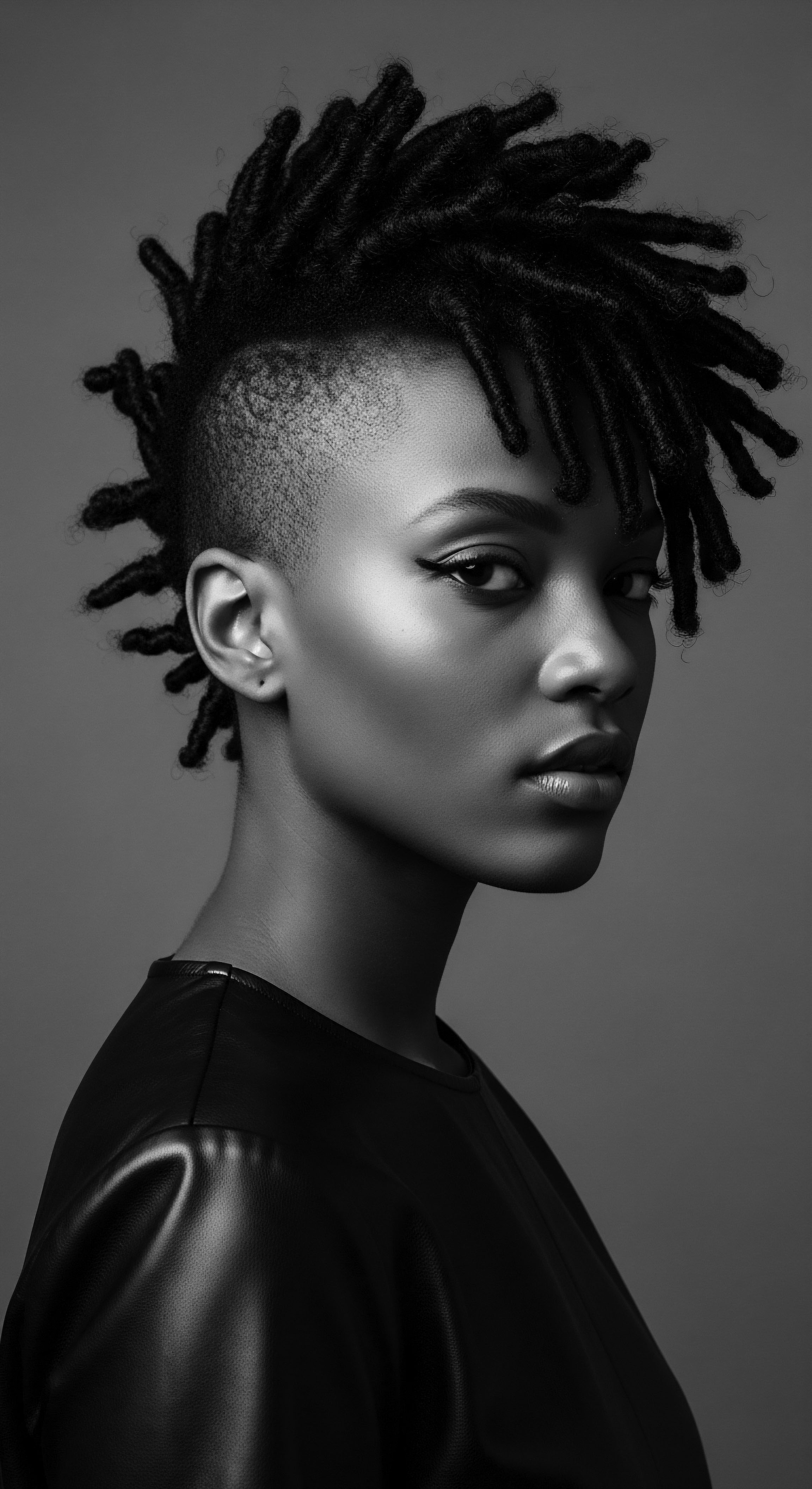
How Has Modernity Altered Traditional Hair Tools?
The tools used in hair care have evolved, yet many contemporary implements find their predecessors in the ingenuity of ancient artisans. Early combs, crafted from wood, bone, or horn, were designed with wide teeth to navigate the natural curl patterns without snagging. These tools were often imbued with symbolic significance, sometimes passed down through generations.
Today’s wide-tooth combs and detangling brushes echo the same principle ❉ gentle, effective separation of strands to prevent breakage. Similarly, the use of natural fibers for polishing and adding sheen to hair, common in many historical cultures, aligns with modern scientific advice on minimizing friction and maintaining cuticle health. While heated styling tools like flat irons and curling wands are products of the industrial age, offering rapid transformations, their widespread use has necessitated a scientific understanding of heat damage and the development of heat protectants. This highlights a dynamic tension ❉ while ancestral methods inherently protected against heat damage by largely avoiding it, modern science steps in to mitigate the risks associated with newer technologies.
The evolution of hairstyling tools also reflects broader societal shifts. The hot comb , for example, popularized in the late 19th and early 20th centuries, represented a complex response to Eurocentric beauty standards that favored straight hair for economic and social mobility. While a technological innovation for its time, its use often came at a significant cost to hair health and cultural authenticity. Understanding this historical context provides a deeper appreciation for the contemporary natural hair movement, which seeks to reclaim traditional styling practices and celebrate the inherent beauty of textured hair without external modification.

Relay
The lineage of textured hair care does not reside solely in the distant past; it is a living, breathing current, transmitted from one hand to another, from elder to child. This is the ‘Relay’—the continuous exchange where ancestral wisdom meets the cutting edge of contemporary hair science, particularly in the daily rituals of holistic care, nighttime protection, and the ingenious problem-solving that defines healthy hair practices. This ongoing dialogue shapes our collective approach to nurturing textured hair, ensuring its health and celebrating its heritage.
A personalized textured hair regimen is not a new invention; its blueprints are found in the adaptive wisdom of our forebears. Traditional hair care was inherently personalized, tailored to the individual’s hair characteristics, the available local resources, and the specific environmental conditions. It was a holistic endeavor, recognizing that external hair health reflected internal well-being.
Modern trichology, with its detailed analysis of hair and scalp conditions, now validates many of these traditional correlations, showing how diet, stress, and systemic health directly impact the hair follicle and shaft. The ancient practice of assessing one’s hair by touch, sight, and feel to determine its needs—whether for more moisture, more strength, or a period of rest—finds its scientific parallel in contemporary diagnostics, though the language and tools have changed.
The deep well of ancestral care, a blend of intuition and practiced wisdom, mirrors modern holistic hair science.
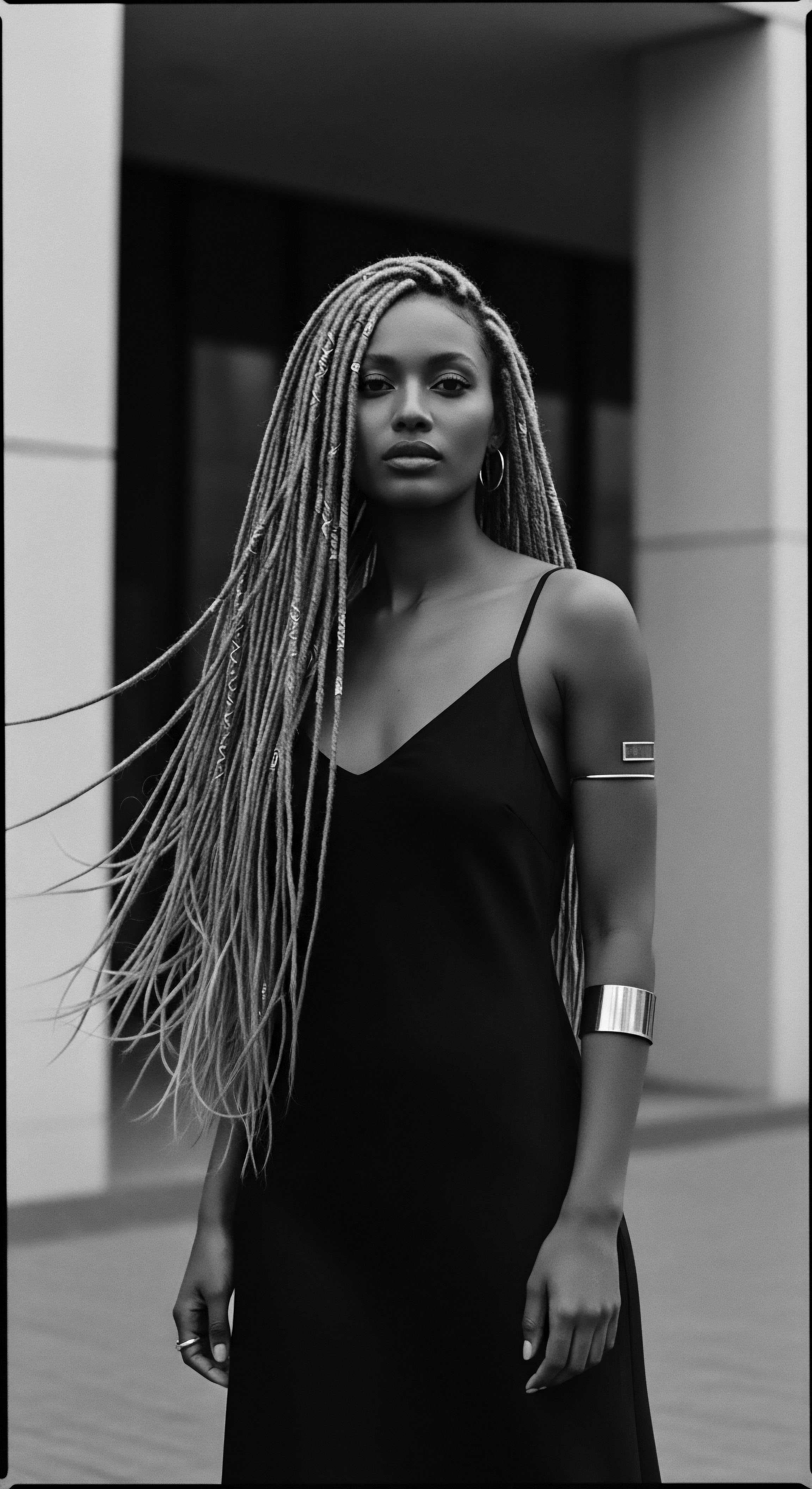
The Nighttime Sanctuary ❉ Bonnet Wisdom and Ancestral Protection
One of the most profound examples of ancient wisdom meeting contemporary science resides in the simple yet indispensable act of protecting textured hair during sleep. The ubiquitous satin bonnet of today, a staple in many Black and mixed-race households, is a modern iteration of an age-old practice ❉ protecting the hair from friction, moisture loss, and tangling. Historically, headwraps and caps were worn for various reasons—modesty, adornment, and critically, protection from the elements and during sleep. These coverings, made from natural fibers like cotton or silk, served a vital function in preserving styles and maintaining hair health overnight.
The scientific validation of this practice is clear. Cotton pillowcases, with their absorbent fibers, draw moisture from the hair and create friction, leading to dryness, frizz, and breakage. Satin and silk, with their smooth surfaces, allow hair to glide freely, reducing mechanical stress and retaining the hair’s natural moisture balance.
This understanding, once an intuitive wisdom passed through families, is now a scientifically endorsed best practice, a testament to the enduring efficacy of ancestral solutions. The widespread adoption of bonnets and silk pillowcases today is a direct continuum of protective nighttime rituals that have traveled across oceans and centuries, underscoring the resilience of cultural practices.
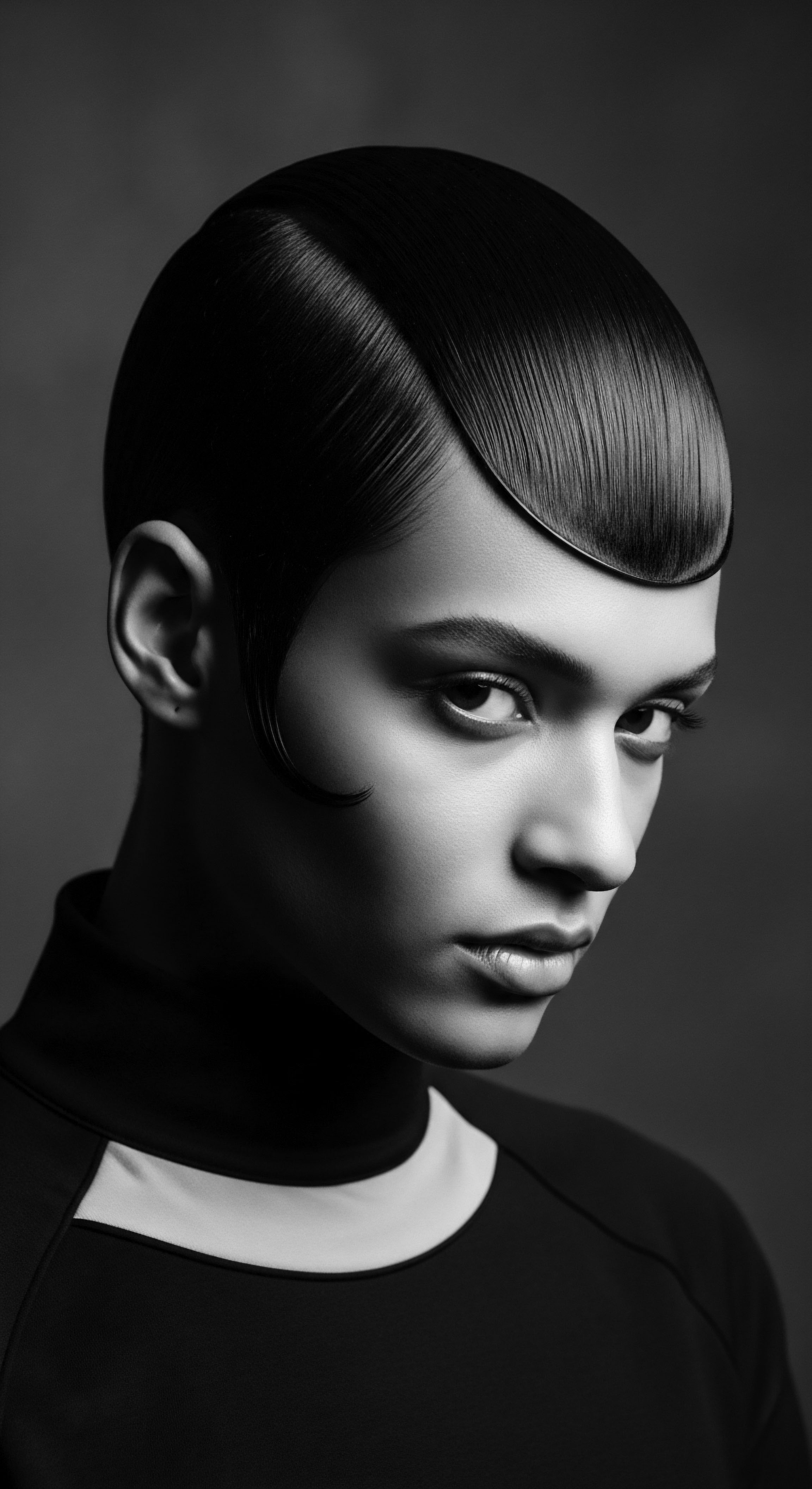
Traditional Ingredients and Modern Validation
The pantheon of traditional ingredients used in textured hair care—from shea butter to aloe vera, black seed oil, and various clays—are not merely folk remedies; many possess scientifically verifiable properties that address common hair concerns. These ingredients, often sourced locally and prepared with ancestral methods, formed the backbone of hair wellness for generations.
Take, for example, shea butter (Vitellaria paradoxa), a cornerstone of West African hair care for centuries. Its rich emollients, vitamins A, E, and F, and essential fatty acids have been scientifically shown to provide exceptional moisturizing, anti-inflammatory, and protective benefits for both hair and scalp. The traditional extraction process, involving meticulous drying, crushing, roasting, and kneading of the nuts, produces a butter that is highly prized for its purity and potency. Modern formulations often seek to replicate or incorporate these compounds, showing a clear scientific appreciation for this ancestral staple.
Similarly, the use of aloe vera for its soothing and hydrating properties, or various herbs for scalp treatments, finds grounding in their documented anti-inflammatory, antimicrobial, and conditioning effects. (Ali et al. 2024).
A comprehensive understanding of ancestral ingredients and their contemporary scientific validation:
- Shea Butter ❉ Known for its emollient properties and high concentrations of fatty acids and vitamins, which seal in moisture and protect the hair shaft from environmental damage.
- Black Seed Oil (Nigella sativa) ❉ Historically used for various ailments, modern research highlights its antimicrobial and anti-inflammatory properties, benefiting scalp health and potentially stimulating hair growth.
- Rhassoul Clay ❉ A natural mineral clay traditionally used in North Africa, its cleansing and detoxifying properties are now recognized for clarifying the scalp without stripping hair of its natural oils.
| Hair Concern Dryness and Brittleness |
| Ancestral Solution (Heritage Practice) Regular application of plant-based oils (e.g. shea butter, coconut oil) and protective styles to retain moisture. |
| Contemporary Scientific Solution Moisturizing conditioners with humectants and emollients, deep conditioning treatments, and low-porosity product lines. |
| Hair Concern Scalp Irritation/Dandruff |
| Ancestral Solution (Heritage Practice) Herbal rinses (e.g. neem, aloe vera) and natural clays for cleansing and soothing the scalp. |
| Contemporary Scientific Solution Medicated shampoos with active ingredients like pyrithione zinc or ketoconazole, scalp exfoliators, and targeted serums. |
| Hair Concern Breakage/Damage |
| Ancestral Solution (Heritage Practice) Protective styling, minimal manipulation, and gentle detangling with wide-tooth combs. |
| Contemporary Scientific Solution Protein treatments to strengthen hair bonds, bond-repairing technologies, and hair masks that fortify the cuticle. |
| Hair Concern The enduring effectiveness of heritage practices often lies in their holistic and preventative nature, a wisdom that modern science continues to unravel and validate. |

How Do Holistic Wellness Philosophies Inform Hair Health Today?
The holistic influences on hair health, deeply ingrained in ancestral wellness philosophies, offer a profound lens through which to view contemporary care. Ancient traditions understood the interconnectedness of mind, body, and spirit, recognizing that external manifestations like hair health were reflections of internal balance. Stress, diet, sleep, and emotional well-being were all considered integral to one’s overall vitality, including the luster and strength of their hair.
Today, this wisdom is gaining renewed scientific attention. Research into the gut-brain-skin axis, the impact of chronic stress on hormone levels and hair shedding (telogen effluvium), and the role of nutrient deficiencies in hair thinning all echo ancestral understandings. The focus on nutrient-dense, culturally relevant diets, the practice of mindfulness, and the emphasis on communal support—all elements of ancestral wellness—are increasingly recognized by contemporary science as significant contributors to hair vitality.
The seamless connection between internal harmony and external radiance, a truth held by our ancestors, remains a guiding principle in comprehensive textured hair care. This continuity of understanding, from elemental biology to the complexities of wellness, paints a vivid picture of how ancient wisdom truly meets contemporary hair science for textured hair, always anchored in the rich soil of heritage.

Reflection
As we draw these narratives together, a profound truth emerges ❉ the story of textured hair care is a living library, its pages written by generations of hands, its wisdom passed through whispered words and practiced rituals. The question of whether ancient wisdom truly meets contemporary hair science for textured hair finds not a simple answer, but a resounding affirmation—a powerful, ongoing dialogue that enriches both past and present. It is in this dynamic exchange that the Soul of a Strand truly comes alive, a testament to resilience, innovation, and an abiding connection to heritage.
Textured hair, with its unique biological blueprint, has always been more than just protein; it is a canvas, a crown, a deeply personal archive of identity and belonging. The ingenious protective styles, the nourishing rituals with potent ingredients, and the very acts of care, even in the face of oppression, reveal a sophisticated, intuitive science that predates modern laboratories. When we delve into these practices, we recognize not just their historical significance, but their practical efficacy, often validated by the precise instruments and methodologies of today’s scientific inquiry.
This enduring legacy calls us to a deeper reverence for the knowledge systems that have sustained Black and mixed-race communities for centuries. It invites us to see every coil, every twist, every strand not merely as a biological structure, but as a vibrant thread in a continuous, unfolding story—a story of adaptability, of beauty, and of profound, inherited wisdom. The confluence of ancient practices and contemporary scientific understanding does not diminish either; instead, it strengthens our appreciation for the enduring spirit of textured hair and the profound heritage it carries. It is a legacy that continues to teach, to inspire, and to guide the path forward in a world where the unbound helix of textured hair remains a potent symbol of identity, artistry, and enduring strength.

References
- Ali, Z. et al. (2024). Cosmetopoeia of African Plants in Hair Treatment and Care ❉ Topical Nutrition and the Antidiabetic Connection? Diversity, 16(2), 96.
- Blay, Y. (2021). One Drop ❉ Shifting the Lens on Race. Beacon Press.
- Davenport, K. (2019). Heavy is the Head ❉ Evolution of African Hair in America from the 17th c. to the 20th c. Library of Congress.
